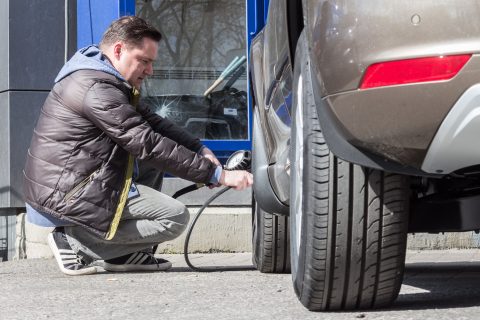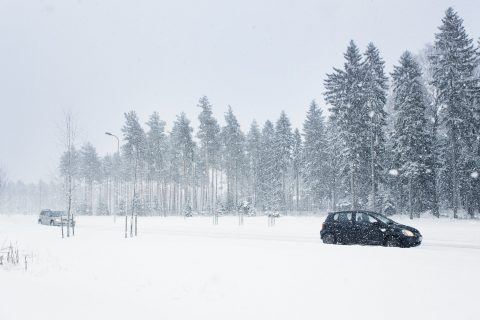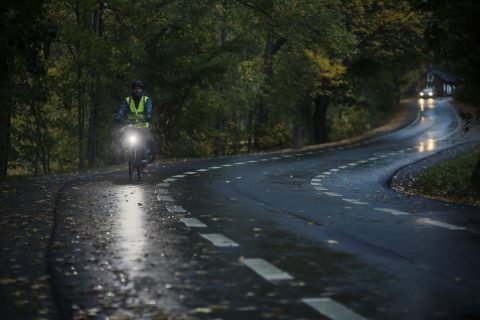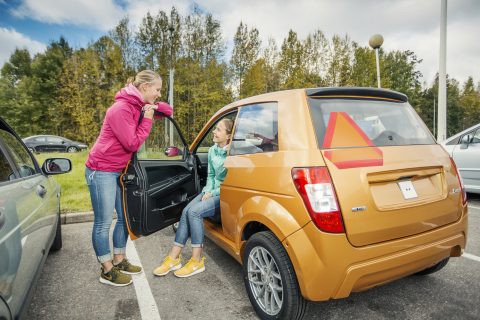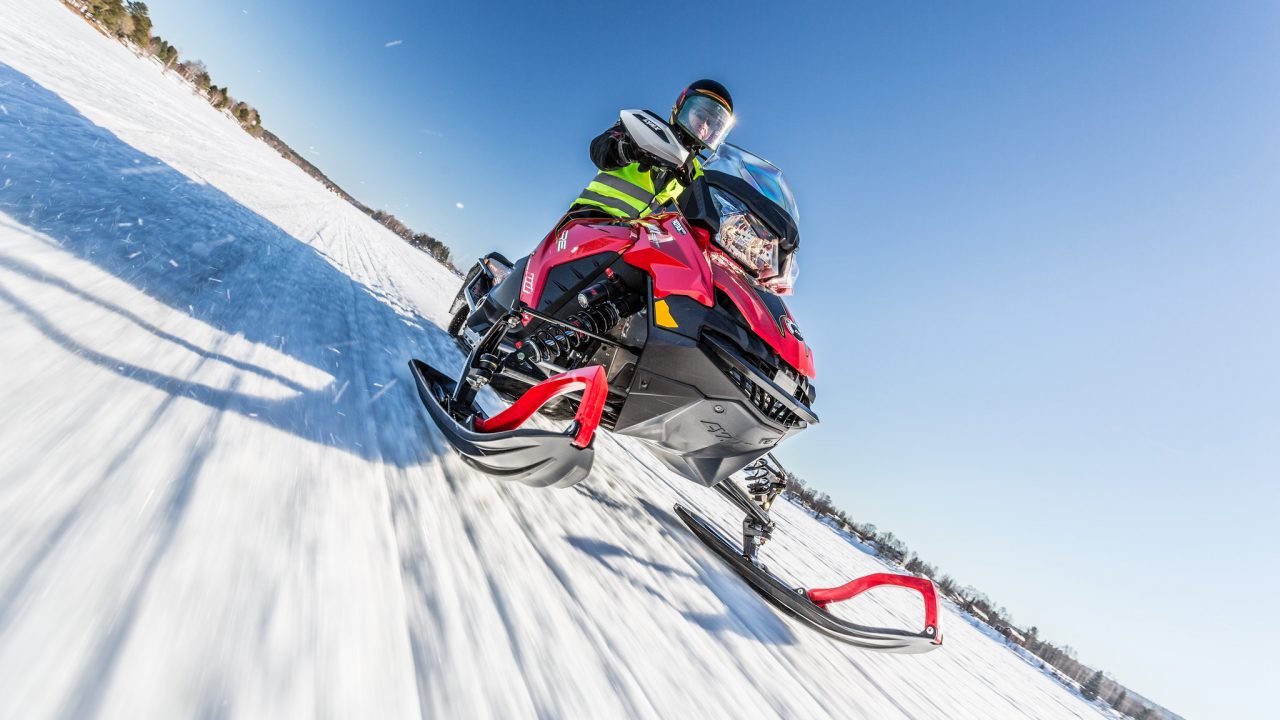
Tips for safe snowmobiling
Ensure a safe snowmobile ride and minimize risks by following the important snowmobile safety tips. Always wear an approved helmet and gear up properly. Stay sober, ride on the designated trail, avoid frozen bodies of water and do not exceed safe speeds.
Tips for safe snowmobiling
- Wear appropriate gear. Get familiar with your snowmobile and gear up properly. Wear a well-fitting and approved helmet.
- Watch the weather. Don’t ride in adverse weather conditions.
- Plan your route. Use marked snowmobile routes and tracks. Learn how to follow a map and to navigate. Snowmobiling off-track is prohibited without the landowner’s permission.
- Check trail conditions and trail maps for where you plan to ride.
- Adjust your speed according to the terrain, weather conditions, and visibility. Do not exceed the speed limits (60 km/h on trails).
- Avoid traveling across bodies of water when uncertain of ice thickness or water currents: drowning continues to shop up in the leading causes of snowmobile fatalities. Snowmobile is not made for crossing open water.
- Do not drive under the influence of alcohol or drugs. DUI is a crime also on a snowmobile.
- Show your intentions with hand signals.
- Be prepared. Pack approriate supplies and gear and be ready to help others if necessary. Develop your outdoor skills.
- Have a way to call for help. For emergencies, download the 112 Finland mobile app on your phone (Opens in a new window). Make sure your phone stays charged.
- Let someone know your trip destination, planned route and estimated return time. Tell them how to reach you during your snowmobile trip. Avoid riding alone if possible. A companion enhances safety and provides assistance in case of an emergency.
- Ride according to your abilities. Learn safe riding habits and practise in a safe environment. Build up your skills one step at a time. Training courses are available.
- Respect nature and other trail users. Don’t trash. Respect all animals, their habitats and the peace of nature by reducing noise levels as much as possible and keeping lots of distance to wildlife.
Safe snowmobile riders stay sober, ride on the designated trail, avoid frozen bodies of water and do not exceed safe speeds.
Driving gear
The helmet is the most important safety equipment for snowmobile users. The helmet provides protection not only from accidents but also from winter conditions and keeps your head warm.
A good helmet is comfortable to wear and it is safe when the size is right. The helmet must feel tight. Even a good helmet will not offer protection if the strap is not fastened or hangs loose.
A good helmet has a sufficient number of air inlets, exhaust openings and air circulation ducts. The visors of some helmet designs provide electrical heating to prevent fogging. A separate helmet hood is worn under the helmet. The hood must be a suitable size and breathable.
When purchasing a helmet, try different models and sizes. Take advantage of the vendor’s expertise and other snowmobile users’ experiences of the good and bad aspects of different helmet models. A model with fixed chin protection is a good choice for sports snowmobiling. There are special helmet models designed for professional use. For all helmet models, ear plugs should be worn to protect your hearing from excessive noise. Pay attention also to the colour of the helmet, because bright and easily distinguishable colours provide extra protection for snowmobiling.
Good driving goggles add to the comfort of wearing the helmet. The choice of goggles is greatly affected by the shape of the face and the helmet used. The goggles protect your face and eyes from cold and wind while driving. Good ventilation of the goggles is important to prevent fogging. Attention should be paid to cleaning and storing the driving goggles. With caution and care, the service life of the goggles can be extended. The colour of the lenses also matters. Light lens colours are suitable for those driving in low light. The yellow colour is also well suited to dusk, and the orange lens is a good universal lens. The blue lens works the least well in snow conditions.
Wear appopriate gear when snowmobiling
When snowmobiling, wear appropriate winter clothing and use layers. Base layer transfers moisture away from your skin to the outer layers ensuring that you stay warm and dry during the ride. Mid layer is to adjust the insulation depending the temperature, riding conditions and your riding style. Many snowmobile suits have a detachable inner lining that serves as a good mid layer. The outer layer is for weather protection. This is the layer that protects you against wind, snow and water.
High-visibility features and reflectors on your suit are recommended.
Armoured guards to be placed under or over the driving suit are available. The guards protect the shoulders, back and chest. In addition to anti-shock equipment, anti-deformation knee and head braces are becoming increasingly common. Sprained ankles and minor foot injuries are alleviated by appropriate snowmobile footwear.
Remember proper snowmobiling gloves, boots and balaclava for under your helmet. Make sure that your gloves do not interfere with the effective use of the snowmobile controls under any circumstances. Good snowmobile footwear is sufficiently warm and at least partly waterproof.
Snowmobiling in a group
When snowmobiling in a group or taking part in a safari, everyone must know and comply with the common codes of conduct agreed before the excursion.
Leader for the group
When travelling in a group, select a leader. The group leader is responsible for making the rules clear and giving clear instructions for the participants to comply with. The group leader also serves as the contact person for the route planning and the equipment to include.
Route planning
The route must be designed to suit everyone taking part in the excursion. On the other hand, the route should also be meaningful for experienced snowmobile drivers. The route must be safe. The timetable for the route must be designed so that there is time to take the necessary breaks. The distances between the snowmobiles in line must be kept large enough.
Equipment
When selecting a snowmobile, the driver’s driving experience must be taken into account. Understanding your snowmobile features and knowing the location of the kill switch, throttle, brakes, and other controls is paramount. The driver must train sufficiently before the excursion to be able to control the snowmobile. Take note that riding a snowmobile on official snowmobile routes requires at least a T class driving licence and 15 years of age.
The group leader shall ensure that participants dress in accordance with the conditions and use other appropriate snowmobile equipment. Even when snowmobiling in a group, the necessary snowmobile spare parts should be at hand, and the group must be able to carry out minor repairs in the terrain.
The group must know where to drive and be able to locate itself on a map for potential rescue measures. Snowmobile drivers in a group must also have an appropriate communication device for a possible call for help.
Riding on the snowmobile routes
- When riding in a group on snowmobile tracks, always ride in single file.
- Ride on the right. Be extra vigilant in corners and hills. Most trails are two-way so there is always a likelihood of on-coming traffic.
- Always follow the snowmobile in front of you at a safe distance that allows you to stop or sufficiently slow down in a safe manner. If the next rider is following too closely, there will not be sufficient time to react and avoid a collision. Always allow extra distance between snowmobiles when riding in snowstorms or other conditions when visibility is poor.
- Follow the speed limits. On trails the maximum permitted speed is 60 km/h. Often the safe speed is much lower than this. Slow down so you are able to stop your snowmobile within the distance you can see.
- Use hand signals.
Common hand signals
Common and pre-agreed hand signals make driving easier and more secure. In order for the message to be understood, each person should give a signal at approximately the same point before the destination, to indicate that point. For example, before arriving at a crossing, each person gives a sign to the people behind.
Riding with passengers
Passenger can be carried only on snowmobiles designed for two passengers: they have an extra seat or longer seat behind the driver, as well as rear handgrips for the passenger. Take note that a passenger will change the center of gravity on your snowmobile and affect your ability to steer. The passenger should keep their feet flat on the running boards at all times, firmly hold the handgrips, and to lean with you into turns.
